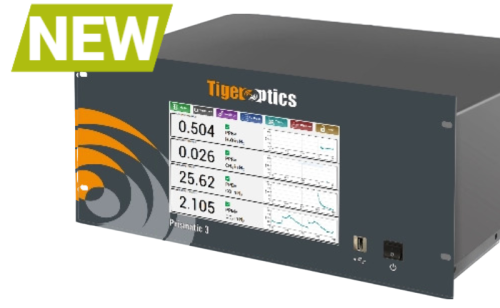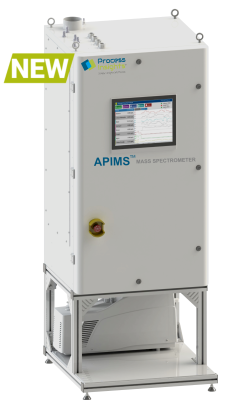Gas Purity ANALYSIS
Gas Purity ANALYSIS MATTERS
Our gas purity analysis solutions hold significant importance in numerous industries that rely on gases with high levels of purity for their processes. The analysis of gas purity plays a crucial role in ensuring that the gases meet the required specifications in terms of quality and purity.
Accurate gas purity analysis provides valuable data regarding the composition of the gas being utilized, enabling optimization of production processes. By having precise information on gas composition, adjustments can be made to process parameters, leading to improved yields and enhanced process efficiency.
The presence of impurities in gases can lead to equipment damage or malfunction, affecting components such as valves, regulators, and other crucial elements. Gas purity analysis plays a vital role in identifying any impurities present in the gas stream, thus preventing potential harm and damage to equipment.
EXPLORE OUR CRDS GAS ANALYSIS PORTFOLIO

For a complete range of analytical instrumentation, applications, systems, and service options, we will work to match your needs and budget and provide the optimal, and most stable process analysis solution for your application.
SALES | TRAINING INQUIRIES
AMERICAS: info@process-insights.com
EMEAI: info.emeai@process-insights.com
APAC: info.apac@process-insights.com
CHINA: info.cn@process-insights.com
SERVICE | TECHNICAL INQUIRIES
FEATURED PRODUCTS
Gas Purity Analysis
Gas Purity Analysis
NEW Tiger Optics™ Prismatic 3+
MULTI-GAS MONITORING AT ITS BEST
Introducing the TIGER OPTICS™ Prismatic 3+™ –With detection limits as low as 3ppb, our Prismatic 3+ Cavity Ring-Down Spectroscopy (CRDS) analyzers will reduce downtime and save money on preventative maintenance that is typically required by other technologies. The Prismatic 3+ laser-based, multi-species analyzer offers up to 4 analytes (H2O, CO, CO2 & CH4), providing measurements in seconds without the need for periodic calibration. Our CRDS analyzers are simple to install and operate, perfect for unmanned applications.
EXTREL™ VeraSpec™ APIMS
Mass spectrometers are widely used for gas purity analysis because they provide accurate and sensitive measurements of the molecular and atomic composition of gas samples. Mass spectrometry works by ionizing gas molecules and then measuring their mass-to-charge ratio (m/z) as they pass through a magnetic or electric field. The resulting mass spectrum provides a unique fingerprint of the gas sample, allowing the identification and quantification of its constituent molecules.
Our EXTREL™ VeraSpec™ APIMS takes the analytical capability of a number of our best technologies for trace gas analysis, and makes them available in one instrument, including Atmospheric Pressure Ionization MS (APIMS), high sensitivity closed source electron impact ionization (EI), and membrane inlet mass spectrometry (MIMS). The DC Corona Discharge Source is a chemical or soft ionization source that is ideal for monitoring molecules in the low ppt range. To make the system a more comprehensive research tool, the system can be configured with MS/MS capability providing the ability to positively identify components by looking at daughter ions.
PROCESS INSIGHTS real-time GAS ANALYSIS SOLUTIONS
-

HIGH PURITY APPLICATIONS
Gas purity analysis is particularly critical in semiconductor manufacturing, where even small amounts of impurities can have a significant impact on the quality and performance of semiconductor devices. In semiconductor manufacturing, gases are used in various processes, such as deposition, etching, and cleaning. The purity of these gases can significantly impact the performance and yield of the semiconductor devices. Below are some of the reasons why gas purity analysis is important in semiconductor applications:
- Yield: The purity of the gases used in the semiconductor manufacturing process can significantly affect the yield of the devices. Even a small number of impurities can cause defects in the semiconductor device and reduce the yield.
- Performance: Impurities in the gases can also impact the performance of the semiconductor devices. For example, contaminants in the deposition gases can affect the thickness, composition, and uniformity of the deposited film, which can impact the device performance.
- Cost: In the semiconductor industry, high-purity gases are typically more expensive than lower purity gases. Gas purity analysis can help ensure that the gas is of the required purity, avoiding unnecessary expenses.
- Safety: Some of the gases used in semiconductor manufacturing, such as silane and hydrogen, are hazardous. Even small impurities in these gases can increase the risk of accidents and safety incidents.
- Regulatory Compliance: The semiconductor industry is heavily regulated, and the purity of the gases used in the manufacturing process is subject to strict regulations. Gas purity analysis is necessary to ensure compliance with these regulations.
-

INDUSTRIAL APPLICATIONS
Gas purity analysis is essential in industrial applications for several reasons. The quality of the gas used can significantly impact the performance, efficiency, and safety of industrial processes. Inadequate gas purity can lead to decreased productivity, increased product defects, and potential safety hazards.
- Product Quality: In industries such as pharmaceuticals, chemical production, and electronics manufacturing, gas purity is critical for ensuring product quality. Any impurities in the gas can lead to product defects or failures, which can have serious consequences.
- Process Efficiency: The purity of gases used in industrial processes can also impact process efficiency. In semiconductor manufacturing, for example, the presence of impurities can lead to reduced yields and increased defects, resulting in increased costs and reduced profitability.
- Safety: Some industrial gases can be hazardous, and even small impurities can significantly increase the risk of accidents and safety incidents. For instance, oxygen used in medical applications must be of high purity to avoid any risks to patients.
- Compliance: In some industries, such as food and beverage production, regulatory standards mandate that the purity of gases used in production meets certain standards. Gas purity analysis is necessary to ensure compliance with these regulations.
- Environmental Impact: The purity of gases used in industrial processes can also impact the environment. Impurities in industrial gases can contribute to air pollution and other environmental issues.
-

LAB & RESEARCH APPLICATIONS
Gas purity is critical in lab and research applications because even small amounts of impurities can significantly affect the outcome of experiments and analyses. For example, in analytical chemistry, impurities in gases used as carrier gases in gas chromatography (GC) can cause errors in the identification and quantification of analytes. Similarly, impurities in gases used in semiconductor manufacturing can affect the performance of the final product.
- Accuracy: Many lab and research applications require precise and accurate measurements. Even small amounts of impurities in gases can affect the accuracy of these measurements and lead to incorrect results.
- Consistency: In some lab and research applications, it is essential to maintain consistent conditions throughout an experiment or analysis. Impurities in gases can cause fluctuations in temperature, pressure, or other parameters, which can lead to inconsistent results.
- Reproducibility: Lab and research experiments often need to be repeated to verify the results or to compare them with other studies. Inconsistent gas purity can make it difficult to reproduce the results accurately.
- Safety: Some gases used in lab and research applications can be hazardous to human health or the environment. Maintaining gas purity is essential to ensure the safety of laboratory personnel and prevent environmental contamination.
- Cost: High-purity gases can be expensive, and the cost can increase significantly with the level of purity required. Therefore, it is crucial to ensure that the gas is used efficiently and effectively, and any impurities that may affect the experiment are eliminated.
-

GASEOUS CRMS & CALIBRATION GAS MIXTURES
Certified Reference Materials (CRMs) are materials that have a known and well-defined composition, which can be used to calibrate analytical instruments and validate analytical methods. In the case of gases, gaseous CRMs are prepared as mixtures of different gases at known concentrations, often expressed in units of parts per million (ppm) or parts per billion (ppb).
Calibration gas mixtures are prepared by blending high-purity gases of known concentrations, often using CRMs as reference materials. They are often used in quality control and quality assurance procedures, particularly in the chemical, petrochemical, and environmental industries. These mixtures can be used to calibrate gas detectors, assess the performance of analytical instruments, and validate analytical methods.
-

HF ALKYLATION UNIT EMISSIONS
The HF (hydrofluoric acid) alkylation unit is a critical process unit in the petroleum refining industry that produces high-octane gasoline components. However, it also presents potential risks to both the environment and personnel due to the use of hazardous materials.
One important aspect of monitoring the emissions from the HF alkylation unit is to ensure that any releases of toxic and harmful gases are detected early and prevented from causing harm to people and the environment. Emissions monitoring involves the continuous measurement of certain parameters such as flow rate, concentration, and temperature of gases emitted from the unit.
Emissions monitoring and gas purity analysis are crucial components of the HF alkylation unit’s monitoring program, helping to ensure the safe and efficient operation of the process while minimizing the risk of environmental pollution and personnel exposure to hazardous materials.




